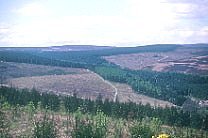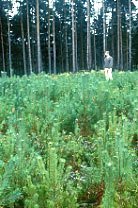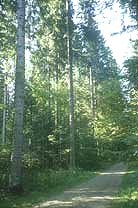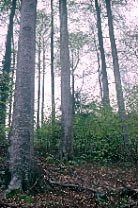A silvicultural system is the process of tending, harvesting and regenerating a forest. Different objectives in forest management (e.g. conservation in an ancient semi-natural woodland vs. production of timber from a conifer plantation) are likely to lead to the adoption of different silvicultural systems.
There are many different types of silvicultural systems and a broad classification can be made based on the pattern of regeneration and how the tree canopy is removed. Generally forests managed using clear felling and shelterwood systems tend to be even-aged (only possess one or two canopy strata) and those managed using selection systems are uneven-aged (have three or more canopy strata).
Classification diagram of silvicultural systems (8K)





